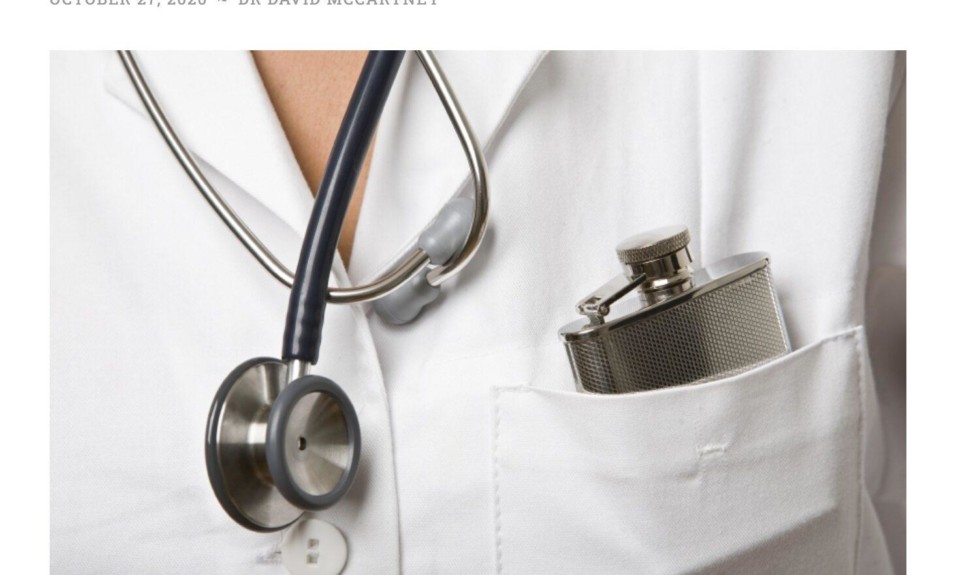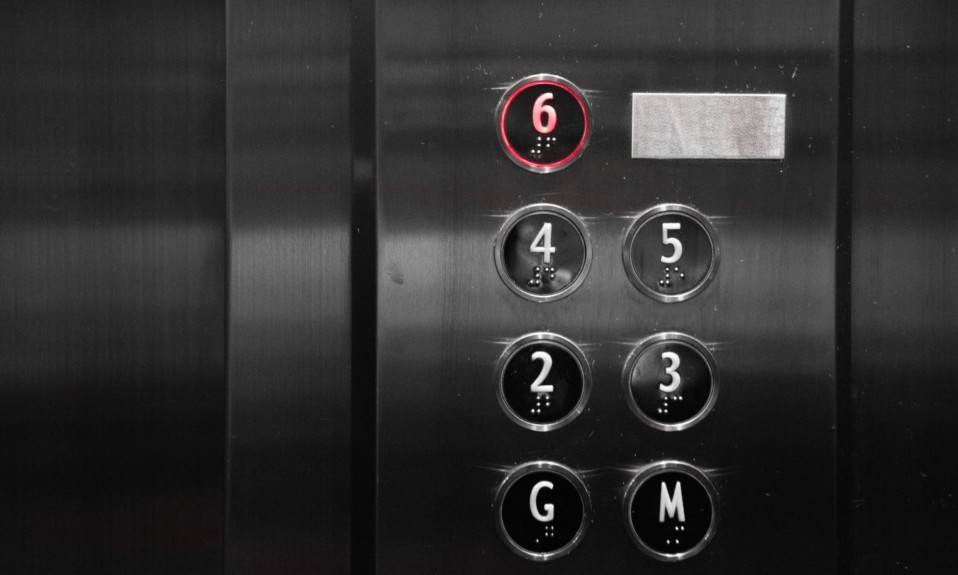What a 2009 seminal study on addicted doctors and treatment can still teach us: Should doctors really get better treatment and follow-up than the rest of the population?
By Dr. David McCartney
October 29, 2020This powerful post is reprinted with permission from one of TreatmentMagazine.com’s go-to blog about addiction, treatment and recovery: Recovery Review.
Addiction to alcohol or other drugs is not always easy to recover from. However, there are many pathways to recovery, including through treatment. One group of patients does far better than most other groups. In fact, their results are so impressive that many commentators have urged us to learn from what’s different about their treatment and follow-up to see if we can transfer learning and experience. This group, claim researchers, sets the standard for addiction treatment. Indeed, it represents gold standard addiction treatment. Who are this group? They are doctors.
In 2009, in the Journal of Substance Abuse Treatment, Robert DuPont and colleagues published a study that looked at how addicted doctors were cared for in the treatment system and also what their outcomes following treatment were.
The numbers were large: 906 physicians admitted to 16 different state Physicians’ Health Programmes were followed up for five years or longer.
Treatment and Doctors
The authors accept that doctors generally come to treatment with more resources than the average patient, but they also point out the hazards that doctors face which potentially increase relapse risk. (Exposure to drugs in the workplace.) What was quite different about doctors in the USA is that they generally have access to specifically designed assessment, treatment and monitoring programmes (Physicians’ Health Programmes or PHPs). These programmes typically evidence long-term abstinence outcomes of between 70% and 96%. Since this paper was written a Practitioner Health Programme has been well established and reports similar results.
Here’s what the researchers of the 2009 paper say: “For these reasons, the PHPs appeared to represent one of the most sensible and evidence-based approaches to addiction currently available. We reasoned that an examination of this novel care management approach might provide suggestions for optimally organized and delivered addiction treatment—real-world treatment at its best. If there were clear evidence of positive results from this form of care, the findings might provide guidance for improving mainstream treatment efforts.”
Features of the PHP model
- Doctors sign binding contracts
- Abstinence is the goal
- Weekly doctor-specific mutual aid groups
- Attendance at 12-step mutual aid groups (AA, NA, CA, etc.)
- The regulatory boards are often avoided if doctors comply
- Extended care (five years)
- Recovery often starts with an active/planned intervention
- This is followed by an intensive residential (or outpatient)
rehab period, usually three months long - Withdrawal from work during treatment
- Active monitoring and care management
- Active family engagement
- Mental and physical health needs assessed
- Active management of relapse
- Random drug and alcohol tests over the five years
The study: 16 PHPs participated in the national survey, which looked at all admissions (intention to treat) over a six-year period. The case records and lab results of 904 doctors were studied. Most (86%) were male with an average age of 44. Two-thirds were married.
Drugs of choice: What drugs were problematic?
The primary drugs of choice reported by these physicians were alcohol (50%), opiates (33%), stimulants (8%) or another substance (9%). Fifty percent reported abusing more than one substance, and 14% reported a history of intravenous drug use. Seventeen percent had been arrested for an alcohol or drug-related offense, and 9% had been convicted on those charges.
ORT: And what about our first-line treatment for opiate addiction? How many of the hundreds of opiate-addicted doctors ended up on methadone? That would be just one, or to put it another way, 0.001% of the sample.
Work: 72% of the doctors got back to work. When they looked at doctors who successfully completed the programme, this rose to 91%.
Overall Outcomes
Specifically, of the 904 physicians followed, 72% were still licensed and practicing with no indications of substance abuse or malpractice, five to seven years after signing their contracts. In contrast, the PHP process appears to have moved approximately 18% of these physicians out of the practice of medicine through loss of license or pressure to stop practice.
Of the 904, 180 (19%) had a relapse episode and were reported to their licensing boards. However, only 22% of these had any evidence of a second relapse—generally indicating that the intensified treatment and monitoring were successful in maintaining remission.
Nuggets
- This was the largest sample of doctors ever followed and over the longest period
- Doctors use in a similar fashion to everyone else
- 78% of doctors did not have a single positive drug test over the years of monitoriing
- Outcomes did not differ by drug of choice, opiate addicted docs did as well as alcohol dependent docs
- IV drug users did as well as everyone else
- 50% of the doctors were polysubstance abusers
- This research is in keeping with literature before and since
What Does This Mean for Treatment?
If we applied the principles and standard of treatment that doctors get to other patients, would we see improved outcomes overall?
Whatever the differences from other populations experiencing SUDs [substance use disorders], it is likely that the successful treatment of physicians with SUDs has important implications for SUD treatment in general. For example, if physicians were found to have significantly better outcomes than other groups when treated for diabetes or coronary artery disease, this would be of great public health interest.
The expectation is that doctors will make the journey to abstinent recovery, but there seems to be a much lower expectation of their patients. Some argue this is just realistic, but does such ‘realism’ result in poorer outcomes?”
Raising the Bar?
“Recognizing that SUDs are biological disorders with major behavioral components (just like diabetes and coronary artery disease), the relatively high level of success exhibited by physicians whose care is managed by PHP is important with respect to the potential for success in addiction treatment generally. Indeed, the observed rate of success among physicians directly contradicts the common misperception that relapse is both inevitable and common, if not universal, among patients recovering from SUDs.”
They go on to say: “Indeed, rather than being a defining characteristic of addiction, the “ inevitable relapse” may be a defining characteristic of the acute care model of biopsychosocial stabilization, which offers an opportunity for recovery initiation but lacks the essential ingredients to achieve recovery maintenance.”
Making All Treatment Gold Standard
The paper has some suggestions to transfer learning and improve addiction treatment outcomes:
- Adopt the contingency management aspects of PHPs
- Offer frequent random drug testing
- Create tight linkages with 12-step programmes and abstinence standards
- Active management of relapse by intensified treatment and monitoring
- Continuing care approach
- Focus on lifelong recovery
Reflections
The fact that only one doctor ended up on opiate replacement is a remarkable finding. Are there double standards inherent here? Why do doctors so readily turn away from an evidence-based intervention, one they are very happy to prescribe for patients?
The expectation is that doctors will make the journey to abstinent recovery, but there seems to be a much lower expectation of their patients. Some argue this is just realistic, but does such “realism” result in poorer outcomes? Is there a mismatch between professional expectations and client goals? Safety considerations have to be paramount and harm reduction at the heart of everything—but when a patient sets abstinence as a goal, could we do better at helping them get there?
I don’t think there’s much doubt that we could get better outcomes for our clients by raising the bar, increasing the intensity and duration of treatment, actively referring to mutual aid and thinking much more about the bridge from treatment to recovery community support, which is one of the keys to long term recovery.
Should doctors really get better treatment and follow up than the rest of the population? Can we narrow the gap?
__________
DuPont, R., McLellan, A., White, W., Merlo, L., & Gold, M. (2009). Setting the standard for recovery: Physicians’ Health Programs Journal of Substance Abuse Treatment, 36 (2), 159-171 DOI: 10.1016/j.jsat.2008.01.004
This blog was previously published a few years ago. It has been lightly edited.














